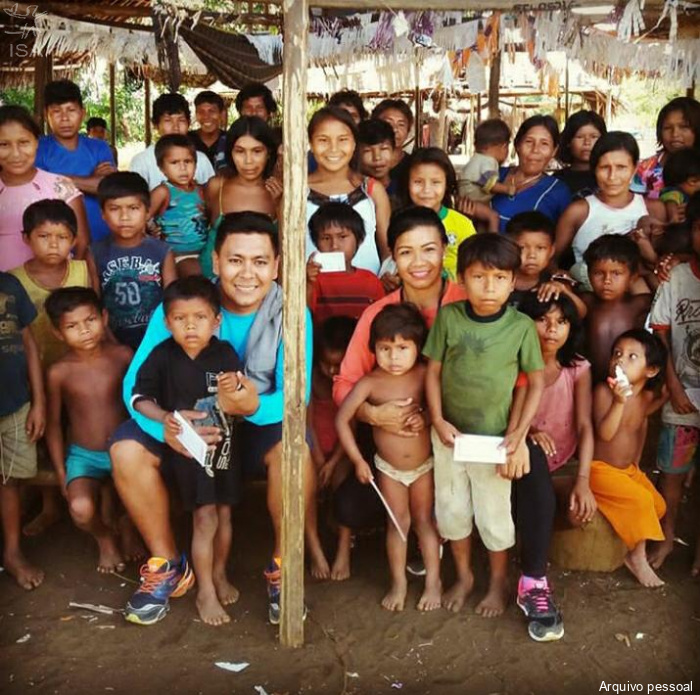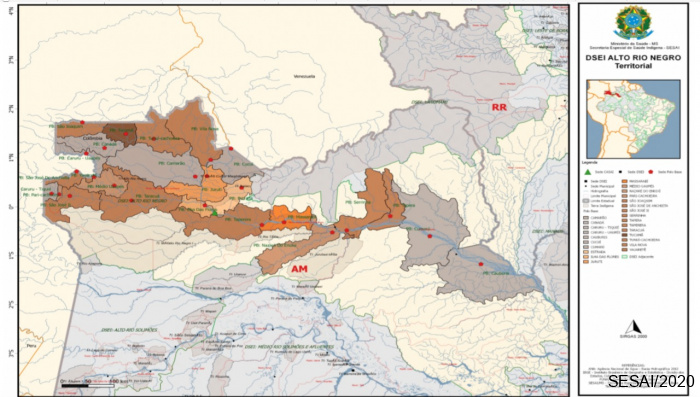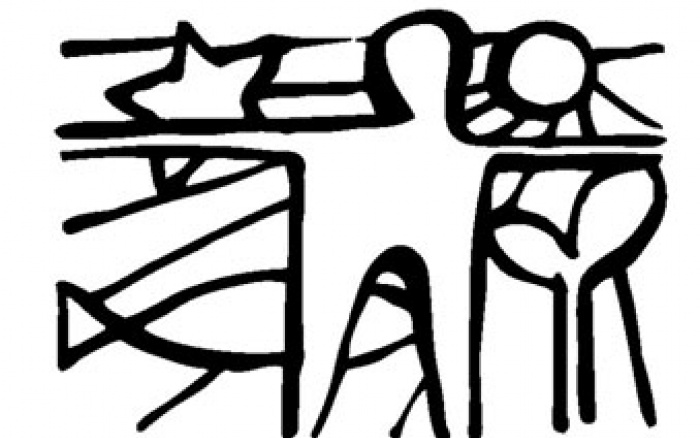Você está na versão anterior do website do ISA
Atenção
Essa é a versão antiga do site do ISA que ficou no ar até março de 2022. As informações institucionais aqui contidas podem estar desatualizadas. Acesse https://www.socioambiental.org para a versão atual.
In the Upper Rio Negro, a booklet in indigenous languages guides the fight against Covid-19
Friday, 24 de April de 2020 
Esta notícia está associada ao Programa:
The material prepared in Portuguese and in four indigenous languages will support health professionals in raising awareness against the new coronavirus
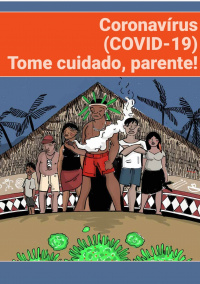
Protecting the indigenous communities of the Upper Rio Negro from the coronavirus pandemic mobilized urgent efforts by the team from the Socioenvironmental Institute (ISA) based in São Gabriel da Cachoeira (AM) to develop information booklets in the Baniwa, Dâw, Nheengatu and Tukano languages to be carried for Indigenous Lands by health professionals from DSEI-ARN (Special Indigenous Sanitary District of Alto Rio Negro).
No Alto Rio Negro, cartilha em idiomas indígenas orienta combate à Covid-19
The material has a Portuguese version and will also be used in an urban context by professionals from the Municipal Health Secretariat (Semsa), as well as by other multipliers in the area of education, environment and health, such as indigenous environmental management agents (Aima's), indigenous leaders and communicators.
“The booklets arrive at an excellent time. Just when our 25 multidisciplinary health teams will enter the field to work on Covid-19 prevention. Education and health go hand in hand and awareness about this new disease, adapted to the cultural context, is essential for the work to go well”, said Sediel Ambrósio, nurse and responsible for the group II of Planning, Work Management and Permanent Education of the DSEI-ARN. Sediel will deliver the materials to the 25 basic health centers that exist in the DSEI-ARN area.
Communication, education and information actions are foreseen in the Contingency Plan for Human Infection by the new Coronavirus in Indigenous Peoples of the DSEI-ARN, which covers the municipalities of Barcelos, Santa Isabel do Rio Negro and São Gabriel da Cachoeira, with a total of approximately 30 thousand indigenous people served.
In this plan, experts warn of the vulnerability of the indigenous peoples in the region in relation to Covid-19, since 10% of the villagers are over 60 years old, considered to be high-risk group of the disease. In addition, it also warns of the high rate of morbidities linked to influenza (flu) and pneumonia, in addition to diseases related to the respiratory and circulatory systems. In 2018, 7.4% of deaths registered in the DSEI-ARN were related to respiratory diseases, points out the Contingency Plan (attached below).
The information material will be made available in a recycled paper booklet and also in digital format. Furthermore, based on this content, educational podcasts will also be distributed by the Wayuri Network communicators to be shared via cell phones in indigenous languages. The DSEI-ARN and Semsa teams are also already using Foirn's radio network to inform indigenous communities about the worsening pandemic in Brazil and the Amazon region.
Mobilization
A few days after the World Health Organization (WHO) declared a pandemic situation, a Municipal Decree was created in São Gabriel da Cachoeira - the most indigenous municipality in Brazil - to prevent and fight the new Coronavirus. By aggregating different institutions, the committee is integrating efforts to prevent the arrival of Covid-19 in Alto Rio Negro, as well as to seek urgent improvements to the region's health system in case of the proliferation of the disease. ISA, together with the Federation of Indigenous Organizations of Rio Negro (Foirn), participates in this committee and advises on communication, education, legal advice and advocacy work.
The municipal health secretary of São Gabriel da Cachoeira, Fábio Lobato Sampaio, was in Manaus to articulate resources and inputs to be brought to the municipality urgently until yesterday. Sampaio arrived this Wednesday (01/04) back to São Gabriel with materials purchased by the Amazonas State Secretariat of Health (Susam), including 300 rapid Covid-19 tests and PPE kits (personal protective equipment such as gloves and masks). “We will continue our integrated efforts within the committee to address this pandemic. It is very important for the municipality to have the unity of institutions in this very difficult moment ”, he said.
The municipalities of Barcelos, Santa Isabel do Rio Negro and São Gabriel will also receive emergency funds from the Fund for Tourism, Infrastructure, Services and Interior Development of Amazonas, as announced by the governor of Amazonas, Wilson Lima.
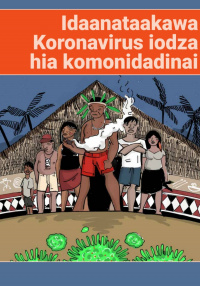
Altogether, R$ 70 million will be allocated to this fund in the interior of the state. Barcelos and Santa Isabel will receive R$ 360 thousand (each) and São Gabriel will receive R$ 515 thousand, which will be invested in accordance with the municipal contingency plan, 70% of which will fund operations and 30% in investments, according to Sampaio.
One of the biggest concerns in the Rio Negro is the fact that the municipalities do not have Intensive Care Units (ICUs) or mechanical respirators. In severe cases, patients will need to be moved to the capital, Manaus, some 1,000 kilometers away. Thus, the efforts at this time of the pandemic in Brazil are aimed at the isolation of the municipalities and strong education and information campaigns so that the population avoid circulation and remain in social isolation.
In the case of residents of the Indigenous Lands, the instruction is that they remain in their communities until the end of the crisis. “We need our relatives to stay in their homes in the communities and only come to the city in cases of urgent need. The ideal now is to protect yourself by staying at your homes ”, recommended Foirn president Marivelton Barroso, of the Baré people.
Tradução: Cecília Viana
Juliana Radler
ISA
Imagens:



